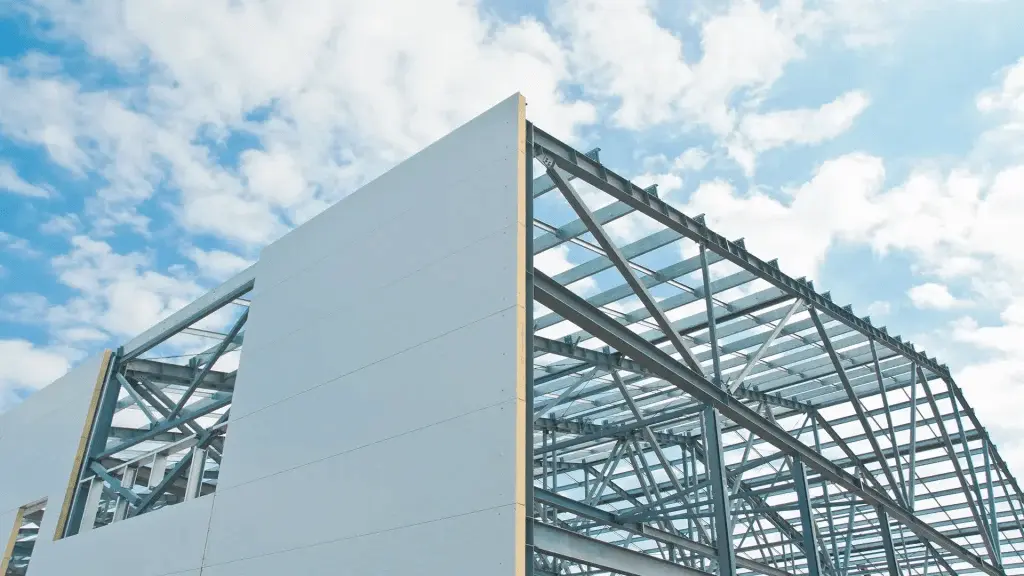Steel Types for Metal Buildings Explained

Types of Steel Used in Metal Buildings
Not all steel is the same. The steel used in metal buildings is specifically engineered to meet the demands of construction, offering a balance of strength, ductility, and corrosion resistance. Here are the most common types of steel used in metal building systems:
1. Carbon Steel
Carbon steel is the most widely used material in metal building construction. It consists primarily of iron and carbon, with trace amounts of other elements. Carbon steel is known for its high tensile strength, making it capable of supporting heavy loads without bending or breaking. It’s also relatively affordable, which makes it a popular choice for large-scale projects.
- Grades: Common grades include ASTM A36 and ASTM A572. ASTM A572 is particularly favored for its higher strength-to-weight ratio, making it ideal for structural components like beams and columns.
- Applications: Carbon steel is used in framing, roofing, and wall panels.
2. Galvanized Steel
Galvanized steel is carbon steel coated with a layer of zinc to protect it from corrosion. This coating makes it highly resistant to rust, which is especially important for metal buildings exposed to moisture or harsh weather conditions.
- Benefits: The zinc coating provides long-lasting protection, reducing maintenance costs and extending the lifespan of the building.
- Applications: Galvanized steel is commonly used for roofing, siding, and other exterior components.
3. Stainless Steel
Stainless steel is an alloy that contains chromium, which gives it exceptional corrosion resistance. While it’s more expensive than carbon steel, its durability and aesthetic appeal make it a preferred choice for certain applications.
- Benefits:Stainless steel is highly resistant to rust, staining, and chemical damage. It also has a sleek, modern appearance.
- Applications: Stainless steel is often used in architectural features, fasteners, and components exposed to corrosive environments.
4. Weathering Steel (Corten Steel)
Weathering steel is a type of carbon steel that forms a protective rust-like coating when exposed to the elements. This coating acts as a barrier, preventing further corrosion and eliminating the need for paint or other protective coatings.
- Benefits: Weathering steel is low-maintenance and has a unique, rustic appearance that many designers find appealing.
- Applications: It’s commonly used in outdoor structures, such as bridges and facades, but can also be incorporated into metal buildings for aesthetic purposes.
5. High-Strength Low-Alloy (HSLA) Steel
HSLA steel is a type of carbon steel that contains small amounts of alloying elements, such as manganese, vanadium, and nickel. These elements enhance its strength, toughness, and weldability.
- Benefits: HSLA steel offers superior strength without adding significant weight, making it ideal for lightweight yet durable structures.
- Applications: It’s often used in structural framing and components that require high load-bearing capacity.
By understanding the different types of steel and their applications, you can make informed decisions that ensure your metal building meets your expectations for quality, durability, and value. Choose wisely, and your investment will pay off for decades to come.




